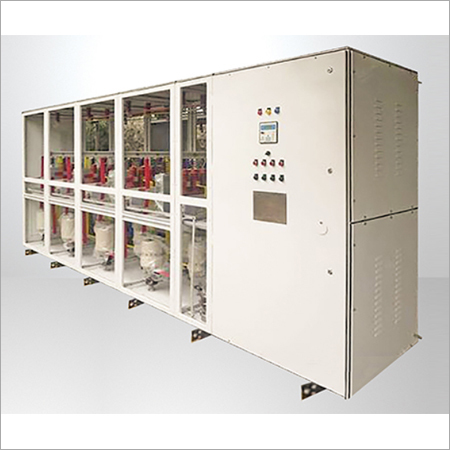

Series Shunt Harmonic Filter Reactors (Low Voltage)
About Series Shunt Harmonic Filter Reactors (Low Voltage)
Series Shunt Harmonic Filter Reactors (Low Voltage) Features
- Voltage 440V to 850V
- Reactive Power from 5 to 250 KVAR
- Voltage drop 0.2 % and 5.67 / 6 / 7 / 12/ 14 %
- High level of safety provided through Internal fuse and Optional Over temperature sensor
- Includes compact discharge resistor
Frequently Asked Questions:
To balance the imbalance currents and correct reactive power, shunt active filters are employed to correct current harmonics of nonlinear loads. To counteract current harmonics or reactive load, a shunt active filter detects the load current and injects a current into the system.
What is the purpose of a harmonic filter?
Harmonic filters reduce distortion by diverting harmonic currents in low-impedance paths. Harmonic filters are capacitive at the fundamental frequency, so they are also used to produce the reactive power required by converters and for power factor correction.
Why is the harmonic series important?
Brass instruments, in particular, benefit greatly from the harmonic series. A pianist or xylophonist can only produce one note per key. When a string player wants a certain note from a string, they grip the string tightly in that location. In essence, this creates a vibrating string with a new length and fundamental.
Why is it called harmonic series?
The harmonic sequence is so named because it is exactly the sequence of points on a taut string that deliver musical "harmonics" when the string is touched there as it is plucked.
Who proved harmonic sequence?
The study of harmonic sequences dates to at least the 6th century bce, when the Greek philosopher and mathematician Pyt


Price:
- 50
- 100
- 200
- 250
- 500
- 1000+
More Products in Electrical Power Devices Category
Hybrid Harmonic Reactor Filter
Material : Sheet metal
Product Type : Hybrid Harmonic Reactor Filter
Connector Type : Terminal block
Feature : Reduces harmonics and improves power factor
Color : Gray
Shape : Rectangular
Series Shunt Harmonic Filter Reactors (Medium And High Voltage)
Material : Metal core with insulated windings
Product Type : Series Shunt Harmonic Filter Reactors
Connector Type : Bolted
Feature : Reduces harmonics and stabilizes system voltage
Color : Gray
Shape : Cylindrical
MV HV Reactive Power Compensator
Material : Metal enclosure with highgrade electrical components
Product Type : MV HV Reactive Power Compensator
Connector Type : Copper busbars
Feature : Enhances power efficiency and stabilizes voltage
Color : White
Shape : Rectangular panel
Energy Audit And Power Quality Analysis
Material : Plastic and Metal
Product Type : Diagnostic Equipment
Connector Type : Standard Connector
Feature : Realtime analysis High accuracy monitoring
Color : Black and Yellow
Shape : Rectangular

 Send Inquiry
Send Inquiry





